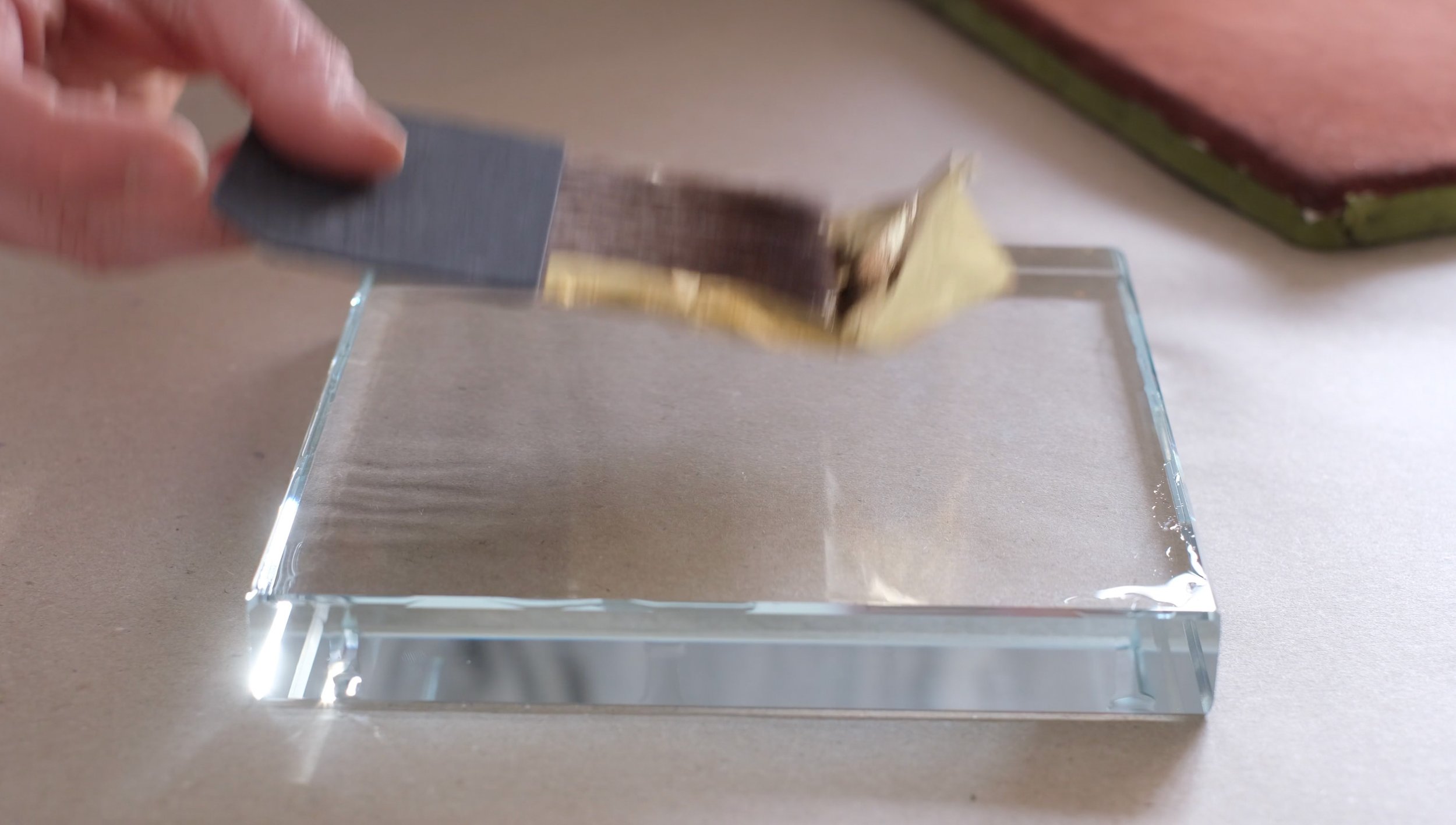What is verre eglomise?
Painting onto the reverse of verre eglomise glass
Origins of verre eglomise
A Parisian picture-framer to Louis XV, Jean Baptiste Glomy, popularised the art form in the 18th century, lending his name to this far older technique, examples of which date back to the Pre-Roman era.
Detail of the gilder’s tip as photographed in The Story of Tools by Hole and Corner
Verre eglomise: Lifting gold leaf onto the glass with a gilder’s tip
What is verre eglomise?
The production of verre eglomise involves several stages; the reverse side of glass is gilded with gold, silver or other metal leaf and fixed with a gelatine-based adhesive resulting in a highly mirrored surface. The leaf is positioned using a gilder’s tip or sometimes bamboo tweezers.
Placing gold leaf with bamboo tweezers
Studio Peascod combines verre eglomise techniques with Japanese papers washi, etching, and painting.
Steps of the verre eglomise gilding process
The gold leaf used for verre eglomise comes in booklets of individual leaves separated by paper.
Verre eglomise: Silver leaf applied to the glass by placing the leaf on to a liquid adhesive.
Verre eglomise: the leaf dries flat on the glass and once it is burnished creates a highly reflective surface.


























